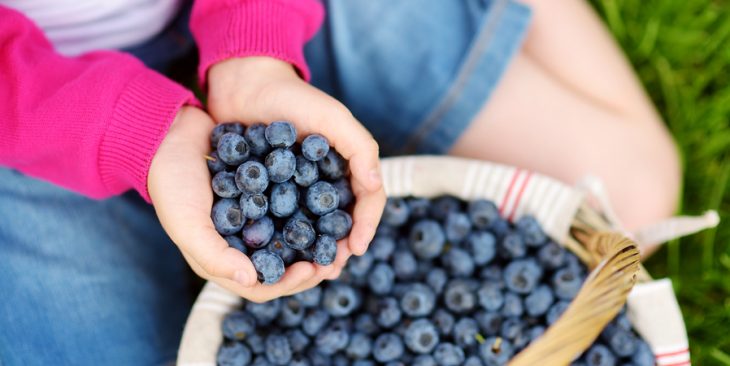The cost of cultivating one hectare of blueberry is: 672,800.00 pesos with subsidy for plant purchase. Without subsidy increases to 868,800.00 pesos. (this information was published in our June 2016 journal, therefore, costs may vary according to inflation and other economic factors)
Cranberry is a small red fruit, similar to cherry and grape; although there are also blue, which unlike its size, brings great benefits to health.
Today, thanks to numerous researches conducted by the Advisory Board for Research in Health and Nutrition of Citrus of the Department of Florida in the United States, is known to be one of the fruits with higher content of antioxidants.
In fact, recent studies show that this fruit protects cells in the body, increasing levels of “good” cholesterol in the blood, improves circulation, reduces cardiovascular inflammation and prevents clogging of arteries.
In addition, it contains proanthocyanidins, substances with anti-adherent function in the body, which makes harmful bacteria such as helicobacter pylori, among others, do not adhere to the walls of the gastrointestinal tract.
IN INJURIOUS CONDITIONS
The fact is that thanks to the wide range of nutraceutical benefits (nutrition and pharmaceuticals) and to the good acceptance of humanity, the cultivation of blueberry, a species native to North America, has expanded to regions of lower latitudes and other conditions unimaginable for its development, including some subtropical areas, such as northern Argentina, Chile, Spain and the most extreme, Mexico.
Currently in the latter country, the production of blueberries is concentrated in Jalisco, Puebla and the State of Mexico and even in tropical areas as in Colima.
Today, the cultivation of this strawberry walks the Mexican countryside to a frank development, says the Secretary of Agriculture, Livestock, Rural Development, Fisheries and Food (SAGARPA) online.
CRANBERRIES IN TALA, JALISCO
Thus, even in communities such as Cuxpala, municipality of Tala, Jalisco, against what could be thought by the type of climate that prevails, the fruit is called blue mulberry, blueberry or blueberry.
It should be noted that the valley of Tala, is one of the regions Jalisco in which it seems that it is impossible to cultivate the blueberry, claim producers of this fruit.
Why, because according to data provided by the Government of the State of Jalisco, the climate of this land has characteristics for cultivation such as sugarcane, corn, vegetables, grains and oilseeds, but not for one of the strawberries of the forest: semi-warm; semi-dry with winter and spring dry; moreover, it does not have a defined winter season.
These climatic typologies differ much from the ideal climate for cultivating cranberry, which according to the guide of their cultivation in Spain, certain varieties of this fruit need to be subjected to low temperatures during a variable period of time, to break the dormancy or season of rest of the plants.
26 SPECIES
However, cranberry (or berry in English), which is considered native to North America, belongs to the genus Vaccinium, and has been described more than 26 species, which are now grouped into subgenera, has reached a level of adaptations to surprising soils and climates.
From this species of cranberry the Spanish cultivation manual says, there have been hybrids with great adaptability among them: Cyanococcus (from cyano: blue, and coccus: berry), which is identified as blueberry or blueberry), and V. Corimbosum L. (northern bush or Northern Higbush in English); in addition to the variety V. Ashei Reade (rabbit eye cranberry or rabbit eye in English).
Likewise, varietals are distinguished from this species, V. angustifolium (low cranberry or lowbush in English) and a hybrid referred to as Vacciniumspp (southern blueberry or Southern Higbush).
The blueberry
So the subgenus of southern shrub cranberry is grown in the southern US, Mexico, Chile, Uruguay Argentina, and subtropical regions of Australia and New Zealand.
This variety is the one that fructifies during the spring (from March to June in the northern part of the American continent, and from September to December in the south) with a dispersed ripening pattern.
However in Mexico, the production of this variety of cranberry, extends from October to June in areas of temperate transitional climates (generally free of frost) and subtropical climates such as Michoacan and Jalisco, where they accumulate from 50 to 250 cold-hours nothing else.



